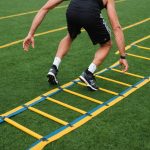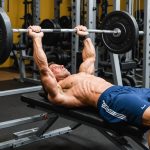The bench press is a staple in many people’s workout routines. Whether you’re a seasoned gym-goer or a newcomer, you’ve likely incorporated this exercise into your regimen. But the bench press isn’t a one-size-fits-all exercise. Depending on the angle of incline, the bench press can target different muscles and elicit varying degrees of muscle activation. Understanding how the angle of incline affects muscle activation can help you tailor your workouts to meet your fitness goals more effectively.
The Physiology of Bench Presses
Before diving into how the angle of incline affects muscle activation, it’s important to establish a basic understanding of the physiology involved in bench presses. This exercise primarily targets the pectoralis major, the large muscle in the chest. But it also engages the anterior deltoids (the front of your shoulders), as well as the triceps brachii, which are located in your upper arms.
In the same genre : Can the inclusion of agility ladders in workouts improve muscular coordination?
Pectoralis Major: Your Main Target
The pectoralis major muscle is the primary mover in a bench press. This is the muscle that’s responsible for the pushing motion that you perform during this exercise. However, the degree to which the pectoralis major muscle is targeted depends largely on the angle of the bench.
Anterior Deltoids: Your Support
The anterior deltoids provide support during the bench press. They help stabilize your shoulders and arms as you push the weight. While these muscles are certainly activated during a bench press, their degree of involvement also depends on the angle of the bench.
Also to see : How does the type of shoe influence squat depth and posture?
Triceps Brachii: Your Extension Power
Your triceps help extend your elbows, an essential part of the pushing motion in a bench press. Just like with the pectoralis major and anterior deltoids, the degree of activation can vary based on the angle of the bench.
The Impact of Incline on Muscle Activation
Now that we’ve covered the main muscles involved in a bench press, let’s delve into how the angle of incline can affect their activation.
Higher Incline Equals Greater Deltoid Activation
Generally, the higher the incline of the bench, the greater the activation of the anterior deltoids. This is because a higher incline requires you to push the weight in a more vertical direction, which demands more work from the shoulders. If you’re looking to specifically target your deltoids, a high-incline bench press could be beneficial.
Lower Incline Targets the Pectoralis Major
On the other hand, a lower incline bench press will engage the pectoralis major muscle more significantly. This is because the angle of the bench allows you to push the weight in a more horizontal direction, placing greater demand on the chest muscles. If your goal is to develop a stronger, more defined chest, you may want to focus on low-incline bench presses.
Neutral Incline Engages All Muscles Equally
A bench press performed on a flat bench, or neutral incline, engages all three muscle groups – the pectoralis major, anterior deltoids, and triceps brachii – equally. This can be a great way to develop overall upper body strength and balance muscle development.
Making the Most of Your Bench Press
Knowing how the angle of incline affects muscle activation, you can structure your bench press workouts to better align with your fitness goals.
Varying Your Incline
If you want to maximize your muscle growth and strength, you should incorporate each type of incline into your workout routine. Performing only one type of incline may limit your muscle development and create imbalances.
Quality Over Quantity
Form and technique are essential in ensuring muscle activation. No matter the incline, ensuring you perform each rep with proper form will optimize muscle activation and minimize the risk of injury.
Listen to Your Body
Remember, everyone’s body is unique. What works for one person may not work for another. Pay attention to how your body feels during each type of incline and adjust accordingly.
The Influence of Research on Incline Bench Press
Scientific research has played a significant role in understanding the impact of bench incline on muscle activation. Various studies have used electromyography (EMG) to measure muscle activation during bench presses at different inclines.
EMG Studies Reinforce the Theory
EMG studies have generally supported the idea that a higher incline bench press activates the anterior deltoids to a greater extent, while a lower incline brings the pectoralis major into play more prominently. These findings can be valuable in designing a workout routine that effectively targets the desired muscle groups.
Influence on Training Programs
Research on the impact of bench incline on muscle activation has influenced how fitness professionals design strength training programs. By taking into account the specific muscle activation caused by different bench inclines, trainers can tailor programs to clients’ specific goals, whether it’s building a stronger chest, developing more defined shoulders, or increasing overall upper body strength.
In sum, the angle of incline in bench presses significantly influences which muscles are most actively engaged. By understanding this relationship, you can ensure your workout regimen is effectively targeting the muscles you wish to develop. As always, remember to maintain proper form and listen to your body to reap the most benefits from your bench press workouts.
The Effects of Grip Width and Bench Press Incline
The way we position ourselves while performing a bench press doesn’t only rely on the incline of the bench, but also on the grip width. This significantly affects which muscles are activated and how much they engage in the exercise.
Wide Grip for Pectoralis Major Activation
A wide grip press, where your hands are wider apart on the bar, typically focuses on the pectoralis major, especially its clavicular head. With a wide grip, the bench press is more likely to target your upper chest. Lower incline or flat bench press with a wide grip can be an effective way to activate this part of your chest muscle.
Narrow Grip for Triceps Brachii Activation
Conversely, a narrow grip bench press, where your hands are closer together on the bar, will primarily engage your triceps brachii. The narrow grip focuses more on your arm muscles, regardless of the angle of the bench.
Grip Width and Bench Angle Interplay
By understanding the interplay between grip width and bench angle, you can manipulate both factors to effectively target specific muscles. For example, a flat bench press with a wide grip will activate your pectoralis major, while a high-incline press with a narrow grip will primarily target your anterior deltoids and triceps brachii.
The Role of the Decline Bench Press in Muscle Activation
The focus on incline bench press might overshadow the role of the decline bench press. However, the decline bench press is equally vital in a comprehensive workout routine.
Decline Bench for Lower Chest
The decline bench press targets the lower part of the pectoralis major, often neglected during flat or incline bench presses. EMG activity studies have shown that the decline bench press engages the lower chest muscles significantly more than a flat or incline press.
Stabilization Role of Anterior Deltoid
The angle of the decline bench press minimizes the involvement of the anterior deltoid. Thus, the chest muscles do most of the work during a decline bench press. The anterior deltoids play more of a stabilization role in this press exercise.
Safety Considerations
While the decline bench press is a useful exercise for targeting the lower chest, it poses a higher risk of injury if not performed correctly. Therefore, maintaining proper form is crucial with this type of bench press.
In Conclusion: Balancing Your Workout Routine
The angle of incline in bench presses – whether it’s an incline press, flat bench press, or decline bench – greatly influences the muscle groups that are activated during the exercise. Likewise, your grip width also plays a significant role in muscle activation.
By understanding the relationship between bench angle and grip width, you can tailor your workout regime to best target specific muscles, promoting balanced muscle growth across your upper body.
Scientific research, particularly EMG activity studies, have provided valuable insights into how these factors influence muscle activation. These findings have shaped the design of strength training programs, helping fitness professionals cater to their clients’ specific goals.
Incorporating a variety of inclines and grip widths into your workout routine can help achieve a comprehensive upper body workout. However, remember that the most important aspect is to listen to your body and maintain the correct form to prevent injuries and optimize muscle growth.
Your bench press exercise doesn’t have to be a one-size-fits-all approach. By manipulating the bench angle and grip width, you can turn this single exercise into a versatile tool for your upper body strength training.











